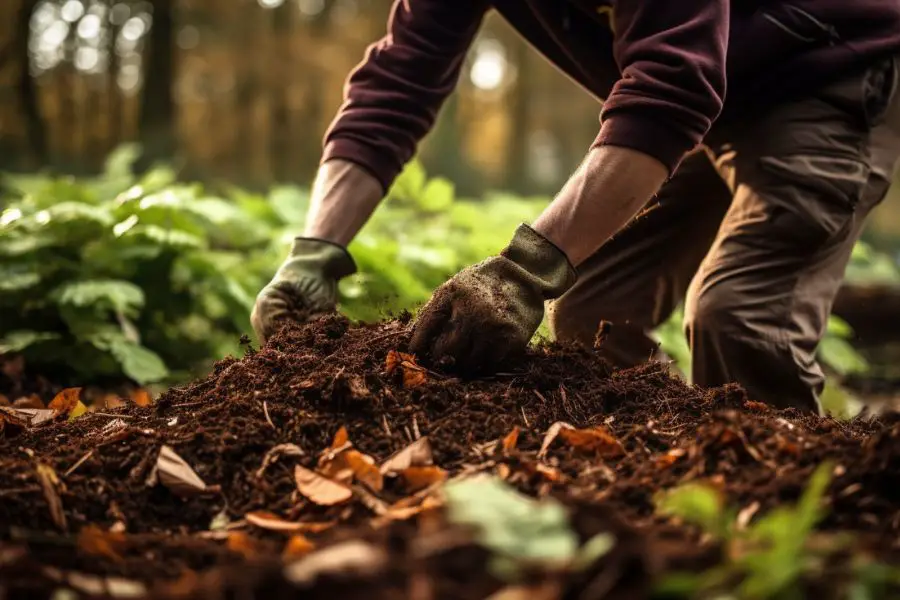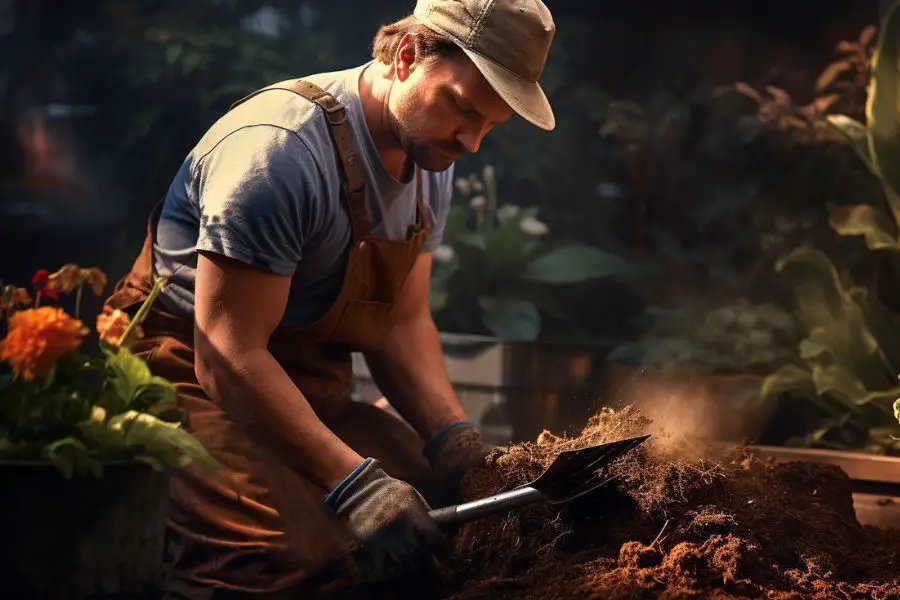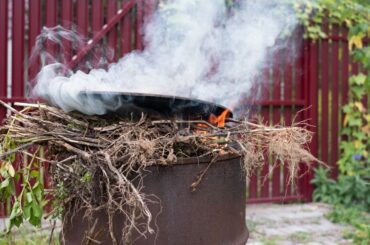For many avid composters and gardeners, ash seems like an ideal soil amendment.

After all, ashes naturally remain after organic matter burns up, so adding them back to soil closes the loop.
However, not all ashes are created equal when it comes to composting. The source, quality, and quantity of ashes requires careful consideration to avoid inadvertently harming your compost.
Let’s dive into the nuances of composting ash, best practices for proper application, and how ash transformations ultimately nourish your garden.
An Ash Primer: The Origins and Composition
To understand how to effectively compost ash, you first need to know what exactly ash is made of. Ash’s components vary based on the original organic material burned. But in general, ash contains:
- Calcium carbonate – Formed from calcium oxides reacting with carbon dioxide in air during burning. A major nutrient contributor.
- Potassium and sodium compounds – Like potassium carbonate and sodium carbonate. Provide potassium and sodium for plants.
- Silicon oxides – Various silica compounds, a source of silicon, important for cell walls in plants.
- Phosphorus – Derived from phosphorus-containing matter like proteins. Helps support fruit production and root growth.
- Heavy metals – Trace amounts of iron, zinc, copper and other metals. Useful for plants in small quantities but toxic in excess.
- Alkaline compounds – Calcium and potassium compounds raise pH. Too much alkalinity damages soil biology.
- Carbon – Some unburned organic carbon remains, though most converts to CO2 during combustion. Adds tiny amounts of organic matter.
This wide range of compounds makes different ashes better or worse for composting depending on the source. Now let’s explore various ash types in greater detail.
Composting Wood Ash: A Nutritious Addition
For composting purposes, pure wood ash is the gold standard. Wood burns cleanly and leaves mineral-rich ash low in contaminants.
Ash from hardwood trees like oak, maple, beech, and birch works particularly well. Their hardwood lumber contains more nutrients than softer conifers. The slower, hotter burning of hardwoods yields more concentrated ash.
In moderation, wood ash balances pH, provides potassium and trace nutrients, and breaks down readily. Limit to 5-10% of compost volume for best results. Too much risks excessive alkalinity.
Sprinkle unclumped wood ash throughout layers as you build compost piles. The ash will percolate down and integrate with the organic matter as it decomposes.
Caution! Avoid Ash From Treated or Painted Wood
Burning construction lumber, plywood, or painted wood concentrates harmful chemicals like arsenic, lead, and formaldehyde in the ash. Never compost ash from treated, painted or laminated wood. The toxic residuals can kill compost biology and contaminate gardens.
When in doubt about ash origins, don’t take risks. Stick to ash from untreated pure hardwoods like you’d use for firewood. This remains the safest, most nutritious wood ash for composting.

Not All Paper Ash Is Created Equal
What about ash from burning paper, cardboard and natural plant debris? This ash can compost safely in moderation if the original materials were uncontaminated.
Low-ink office paper, newsprint, cardboard, and natural plant waste like leaves or orchard trimmings produce decent compostable ash. Avoid paper with glossy coating, colored inks and dyes which concentrate heavy metals.
As always, limit paper ash to thin layers sprinkled throughout compost, avoiding excessive alkalinity. Paper ash decomposes quickly to yield a pH-balanced, nutrient-rich finished product.
Thoughtfully Composting Backyard Campfire Ash
After backyard bonfires and campfire cookouts, you’re left with plenty of tempting ash for the compost heap. Before dumping it in, consider a few factors:
Wood Source – Best to use untreated hardwoods like oak and maple. Avoid chemically pressure treated wood ash.
What Was Burned – Ash from food scraps, meat drippings, or trash will be less clean than just wood.
Ash Purity – Did the ash contain bits of plastic, foil, or other undesirables? Pick out contaminants first.
Temperature – Hotter, thorough burning reduces potentially toxic organic compounds to purer ash.
Moderation – Don’t overload compost with campfire ash. It’s often less controlled than woodstove ash.
Following these precautions, ashes from recreational backyard fires can certainly go in the compost in modest amounts. But evaluate quality and err on the side of less with casual campfire ash.
Steer Clear of Clumpy Coal and Charcoal Ash
Coal ash and lump charcoal ash seem promising but are best excluded from compost piles. In part this is because they clump together when burned instead of forming a powder, limiting surface area exposure.
More importantly, coal and charcoal ash contain substantial heavy metals and sulfur compounds that persist through burning. These contaminants over-concentrate with the clumped ash pieces and can poison compost biology.
While small amounts of charcoal ash may not cause harm, it’s generally better to avoid composting lump coal or charcoal ash altogether. Keep the purity of your compost intact by sticking with wood-based ash.
How Ash Transforms in Compost
Now that we’ve covered ash origins, what happens when all that mineral goodness hits the active microbial workforce of your compost? Understanding ash transformations illuminates why measured ash improves finished compost.
Initially, the alkalinity of ash provides a pH adjustment to counterbalance acidic inputs like kitchen scraps and cotton. This neutralization allows compost microbes to thrive in their preferred pH range.
With time and moisture, soluble potassium, phosphorus and trace mineral compounds dissolve from ash into the compost matrix. This enriches the compost with bioavailable nutrients garden plants need.
Final decomposition products like humic acid chelate insoluble minerals from ash into ionic forms usable by plants. The end result is a nutritious, pH-balanced finished compost.

When Is Ash-Enhanced Compost Ready for Gardening?
Compost enriched with wood ash still requires proper curing time – usually 6 months to a year – to achieve finished humus. This allows pH levels to stabilize and minerals to fully integrate.
Test ash-heavy compost batches with plants like radishes or lettuce before growing fruits, vegetables or flowers. If plants thrive without signs of nutrient excess, the compost is ready for prime time!
Finished ash compost makes plants quite happy. The nutrients and minerals from ash soaked and processed by active compost work wonders in gardens and containers!
Mastering Moderation for Ash Composting Success
The bottom line is ash can be a wonderful compost ingredient when sourced thoughtfully and used in moderation. Some key tips include:
- Select pure hardwood ash low in contaminants
- Limit ash to thin layers scattered lightly throughout compost.
- Avoid coal, charcoal, treated wood, painted wood, glossy paper, and mystery ash.
- Let compost mature fully before using on plants.
- Start with small amounts and increase gradually to test plant tolerance.
Harnessing natural ash cycles for compost brings sustainability full circle. Like any powerful substance, ash composting requires care and diligence. Master the nuances, and enjoy fertile gardens as your reward!
Supercharge Your Garden: The Power of Compost Tea for Lush, Healthy Plants
Beneficial Nematodes For Gardening | Complete Guide |
Cow Manure As Fertilizer : Super Fertilizer




